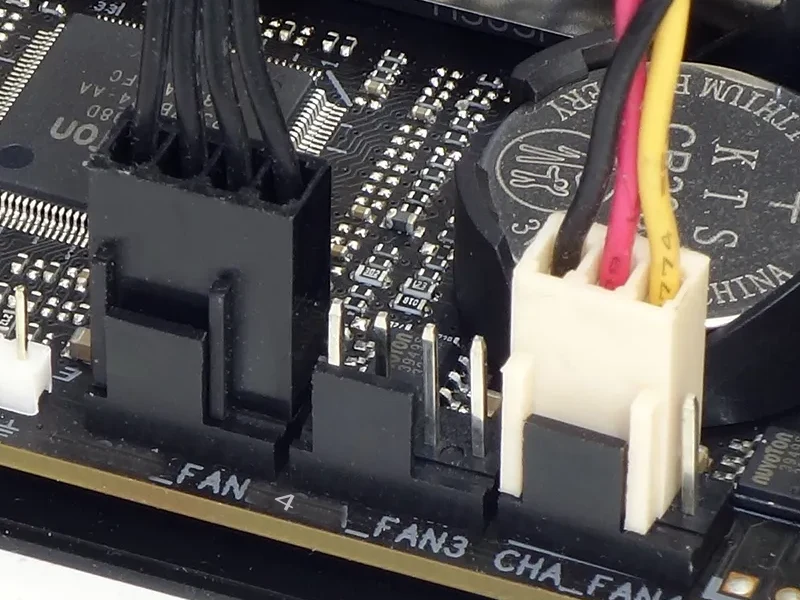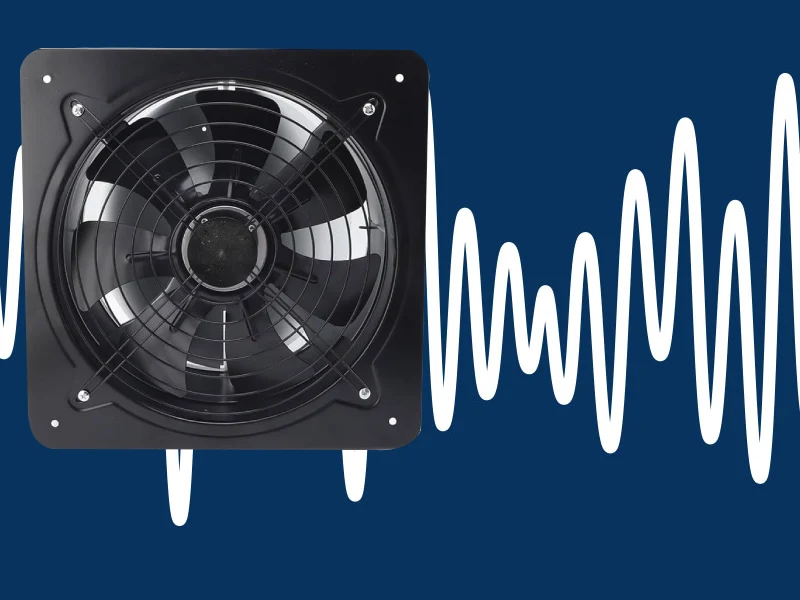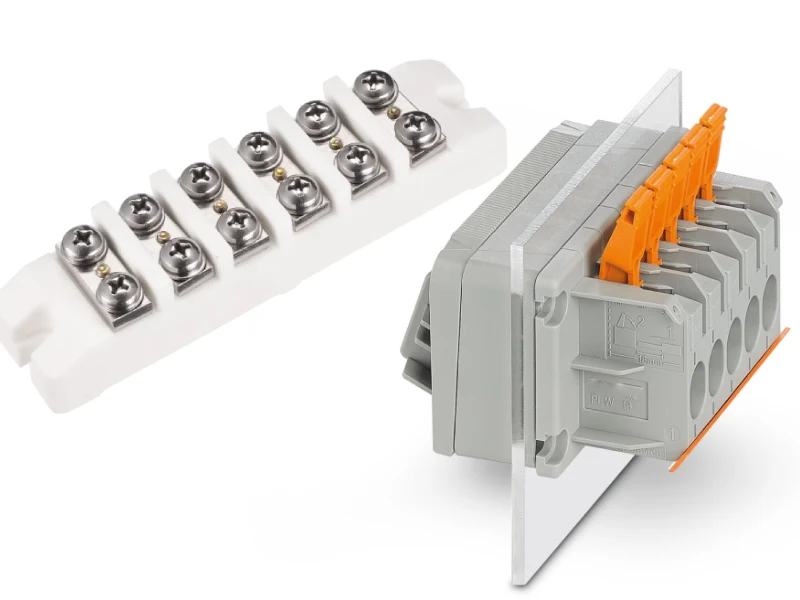You know how hot things can get inside an electrical enclosure. Every day, components like transformers, relays, power supplies, and variable frequency drives generate heat. If you ignore thermal management, this heat builds up fast.
Overheating leads to sudden breakdowns, lost productivity, and even safety risks. Good temperature control boosts reliability, protects your investment, and supports failure safety. When you focus on thermal management, you make sure your systems stay safe and efficient. Thermal Management: Electrical Enclosure Cooling helps you avoid costly downtime.
Thermal Management Key Takeaways
- Heat inside electrical enclosures can damage components and cause failures, so controlling temperature is essential to protect your equipment.
- Proper thermal management improves equipment performance and lifespan by keeping temperatures stable and preventing overheating.
- Moisture and condensation inside enclosures can cause corrosion and short circuits; using heaters and ventilation helps keep moisture away.
- Choosing the right cooling and heating solutions depends on your enclosure size, heat load, and environment for the best protection.
- Regular maintenance like cleaning filters and inspecting seals keeps your thermal management system efficient and prevents costly downtime.
Why Thermal Management Matters
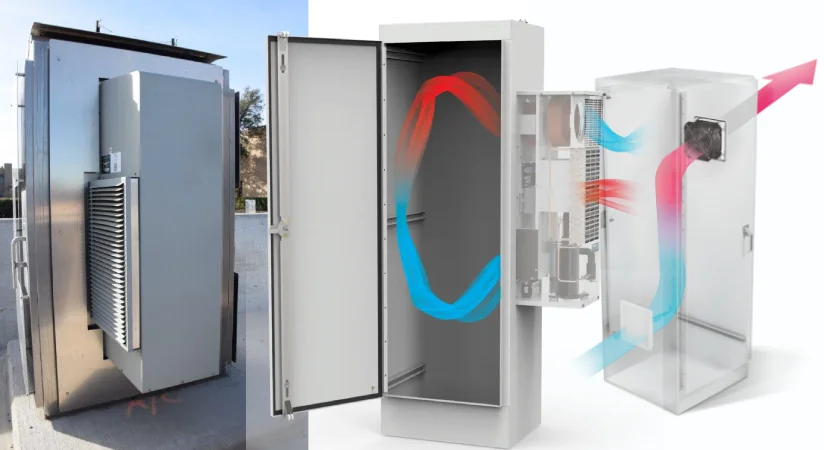
Equipment Protection
Open an electrical enclosure, and you’ll spot a range of heat-producing components. You might see transformers, power supplies, relays, contactors, PLCs, and variable frequency drives. These devices work hard, but they also generate a lot of heat. If you let that heat build up, you risk damaging sensitive electronics inside the cabinet.
Thermal management steps in to keep things cool and steady. When you control the temperature, you prevent overheating, corrosion, and even short circuits. Did you know that every 10°F increase inside the enclosure can cut the reliability of your electronics in half? That’s a huge risk for your operation. By using the right cooling and heating solutions—like air conditioners, heaters, circulating fans, thermostats, thermoelectric coolers, vortex coolers, heat exchangers, hygrostats, and hygrotherms—you protect your investment and avoid sudden breakdowns.
Tip: Good thermal management isn’t just about cooling. In cold or humid environments, heaters and hygrostats stop condensation and moisture from causing trouble.
Performance & Lifespan
You want your equipment to run smoothly and last as long as possible. That’s where thermal management makes a big difference. When heat-producing components stay within their safe temperature range, you get better operational efficiency and fewer failures. If the temperature inside your enclosure climbs above 104°–122°F (40°–50°C), you’ll see more malfunctions and shorter equipment life.
Active cooling methods—like fans, air conditioners, and heat exchangers—help keep the temperature stable. This means your control units, circuit boards, and other electronics won’t age faster than they should. Stable temperatures also mean fewer shutdowns and less maintenance, which boosts your operational efficiency and saves you money in the long run.
A well-managed enclosure isn’t just safer; it’s smarter for your business. You get more uptime, longer-lasting equipment, and peace of mind knowing your systems are protected.
Risks of Poor Thermal Management
Overheating Hazards
You might not notice it right away, but overheating is one of the biggest threats inside your electrical enclosure. When you pack in transformers, relays, power supplies, and drives, they all generate heat. If you don’t have proper cooling, that heat builds up fast. Overheating can cause electrical resistance to rise, signals to get scrambled, and parts to age much faster. Sometimes, you even risk fire.
Take a look at the most common causes of overheating in electrical enclosures:
| Cause of Overheating | Approximate Percentage |
|---|---|
| Loose Connections/Parts | 30.3% |
| Moisture | 17.4% |
| Line Disturbance | 10.4% |
| Defective Insulation | 9.9% |
| Lightning | 8.1% |
| Foreign Objects/Short-circuiting | 7.3% |
| Collision | 3.9% |
| Overloading | 2.4% |
| Dust, Dirt, & Oil | 2.2% |
| Other Causes | 8.1% |
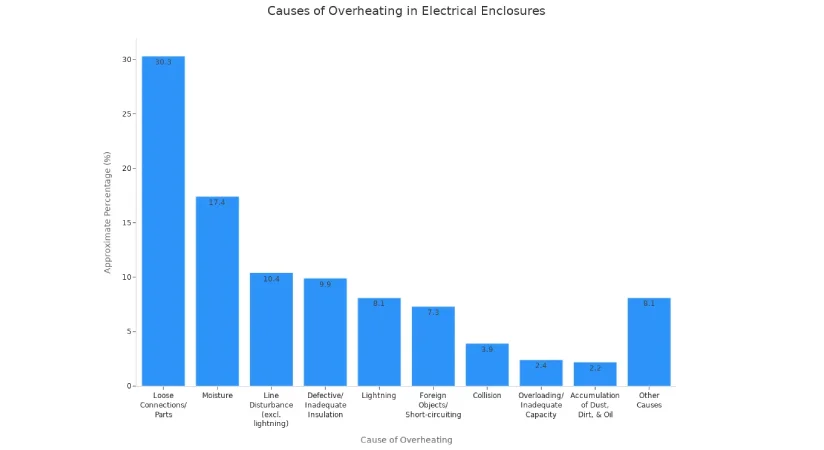
When the temperature inside your enclosure goes above safe limits, you might see system shutdowns, false alarms, or even melted parts. Overheated drives can trip and shut down your whole plant. Quick fixes like moving panels or adding fans without a plan won’t solve the root problem. You need the right thermal management to keep things safe and reliable.
Note: Overheating doesn’t just damage equipment. It can also cause fire hazards, costly repairs, and long downtime.
Condensation & Moisture
Moisture is another silent enemy. When warm air meets cold surfaces inside your enclosure, condensation forms. This water can corrode terminals, rust metal parts, and cause short circuits. If you ignore drainage or let humidity build up, you risk even more damage.
Here’s what can happen if you let moisture take over:
- Corrosion on connectors and terminals
- Short circuits and electrical failures
- Rust on metal parts
- Reduced insulation strength, leading to breakdowns
- Fogging on lenses and sensors, lowering performance
Outdoor enclosures face even more risk because temperature swings cause critical temperature fluctuations. If the inside of your cabinet drops below the dew point, condensation forms quickly. Over time, this moisture can ruin insulation and force you to replace expensive components.
Tip: Heaters, hygrostats, and proper ventilation help keep moisture out and your equipment safe.
Key Factors for Thermal Management
Heat Load
You need to know what creates the heat load inside your electrical enclosure. The main source comes from heat-producing components like transformers, relays, power supplies, and variable frequency drives. These devices work hard and generate a lot of heat. The heat load also depends on how many devices you pack inside and how much power they use. If you add LED indicators or control boards, they add to the heat load too.
The way your enclosure handles this heat matters. Heat can move through the walls (conduction), get carried away by moving air (convection), or radiate out. If your enclosure is sealed tight, it can trap the heat load, making things even hotter. Using fans or air conditioners helps move the heat load out, while closed-loop cooling keeps outside air and dust away. You want to make sure your thermal management system matches the total heat load so your equipment stays safe.
Tip: Always count every heat-producing component when you calculate the heat load. Missing just one can throw off your whole cooling plan.
Ambient Conditions
Ambient conditions play a huge role in thermal management. If your enclosure sits in a hot factory or outside in the sun, the heat load goes up fast. High outside temperatures mean your cooling system has to work harder. If the air around your enclosure is humid, you also risk condensation inside. That can cause corrosion, short circuits, and even equipment failure.
You need to think about both temperature and humidity. When the air is hot and sticky, you might need more than just a fan. Air conditioners, heaters, and hygrostats help control both the heat load and moisture. Closed-loop cooling systems work best in places with lots of dust or high humidity because they keep the inside air clean and dry.
Note: Humidity can sneak up on you. Always check for condensation risks, especially if your enclosure faces big temperature swings.
Enclosure Size
Enclosure size changes how you handle the heat load. Small enclosures trap heat quickly, so the heat load builds up fast. Larger enclosures have more surface area, which helps release some heat load, but if you pack in a lot of heat-producing components, you still need strong cooling.
You want the right balance. If your enclosure is too small, you risk overheating. If it’s too big, you waste energy and money on oversized cooling. The size affects how air moves inside, how well fans or air conditioners work, and how you place your thermal management devices. Always match your enclosure size to your heat load and the number of heat-producing components.
| Enclosure Size | Heat Load Challenge | Best Solution |
|---|---|---|
| Small | Traps heat quickly | Fans, compact AC, heaters |
| Medium | Moderate heat load | Air conditioners, exchangers |
| Large | Needs strong airflow | Multiple fans, large AC |
Callout: The right enclosure size makes your thermal management plan work better. Don’t guess—measure and plan for your real heat load.
Solutions for Thermal Management: Electrical Enclosure Cooling
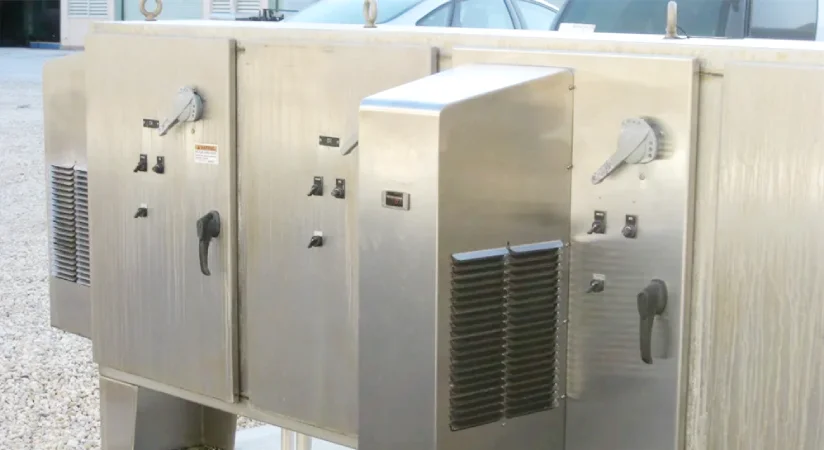
When you want to keep your electrical enclosures running smoothly, you need the right thermal management: electrical enclosure cooling solutions. Let’s break down the best options, starting with Linkwell’s top products and then looking at other choices you might consider.
Cabinet Air Conditioner by Linkwell
If you need precise temperature control for your electrical enclosures, Linkwell’s Cabinet Air Conditioner stands out as a smart choice. You get a closed-loop cooling system that keeps the inside air cool without letting in dust, oil mist, or outside contaminants. This is perfect for sensitive electronics in harsh environments.
Key Features:
- Certified to UL, CE, and NEMA standards for safety and reliability.
- IP54 and IP65 ratings protect against dust and water spray.
- Smart digital controls let you set and monitor temperatures with ease.
- Tool-free maintenance—just click and swap filters in under a minute.
- Top-mount fan design uses natural convection, saving energy and reducing noise.
You can install these units on the side, top, or door of your enclosure. They fit both indoor and outdoor applications, from data centers to food processing plants. Linkwell’s air conditioners have proven results, like dropping internal cabinet temperatures from 68°C to 43°C and cutting downtime by 85% in tough industrial settings.
Tip: Closed-loop cooling technology keeps your enclosure sealed, so you don’t have to worry about outside air or dust getting in.
Why trust Linkwell?
- Linkwell is a global leader in the power control panel market.
- The company partners with brands like Siemens, Schneider, and ABB for top-quality components.
- You get rapid order fulfillment, 24/7 technical support, and real-time updates.
- Linkwell holds international certifications (UL, CE, TUV, IEC, ISO), so you know you’re getting reliable thermal management: electrical enclosure cooling.
Enclosure Heater by Linkwell
Cold and damp conditions can be just as dangerous as heat. Linkwell’s Enclosure Heater gives you a powerful way to fight condensation, freezing, and moisture inside your cabinets. This heater uses PTC self-regulating technology, which means it only heats when needed, saving energy and keeping temperatures steady.
| Feature/Aspect | Description |
|---|---|
| Heating Technology | PTC self-regulating for safe, consistent temperature control |
| Material | Corrosion-resistant aluminum for harsh environments |
| Power Models | 300W, 500W, 700W with IP20, IP44, IP54 options |
| Voltage Compatibility | 220V-240V for worldwide use |
| Safety Certifications | CE and UL certified |
| Operating Temperature Range | -45°C to +70°C |
| Protection Rating | IP20 to IP54, shields against dust and water |
| Application Scenarios | Automation, outdoor equipment, telecom, data centers, industrial control |
| Additional Features | Modular design, smart temperature control, warranty support |
You can use Linkwell heaters in telecom base stations, industrial control panels, and data centers. They help prevent condensation on sensitive equipment, reduce downtime, and keep your systems running even in freezing weather. Each heater goes through over 50,000 hours of testing, so you know it’s built to last.
Note: For best results, install heaters at the bottom or side of your enclosure. This helps air circulate and keeps cables safe from overheating.
Other Cooling & Heating Options
You have plenty of choices when it comes to thermal management: electrical enclosure cooling. Here’s a quick look at other popular cooling solutions and how they stack up:
| Cooling Solution | Key Features & Effectiveness | Typical Applications | Advantages & Limitations |
|---|---|---|---|
| Heat Exchangers | Moderate cooling, energy efficient, maintain enclosure integrity by not introducing external air | Manufacturing, Energy sectors | Reliable, suitable for harsh environments; expanding applicability with design innovations |
| Filter Fans | Cost-effective, facilitate air circulation, low maintenance | Commercial, Light industrial | Effective in low dust environments; less suitable where contaminants or precise temperature control needed |
| Thermoelectric Coolers | Solid-state, compact, no moving parts, localized cooling | Telecommunications, Medical devices | Quiet, vibration-free; growing adoption with material and integration advances |
| Air Conditioners | Precise temperature control, closed-loop cooling | Data centers, Food processing, Pharmaceuticals | High efficiency; ideal for sensitive electronics and harsh environments |
| Others (Liquid, Hybrid) | Specialized cooling for high heat loads or mission-critical applications | High heat load environments | Superior cooling but higher cost; hybrid systems combine air and liquid cooling benefits |
You might also see:
- Heat sink coolers for tight spaces.
- Heat pipe coolers that move heat outside while recirculating cooled air.
- Vapor compression coolers for sealed, harsh environments.
- Thermostatically controlled heaters for automatic on/off operation.
Recent trends in cooling technology include miniaturized units, smart sensors, and eco-friendly refrigerants. These innovations boost energy efficiency and reliability, making thermal management: electrical enclosure cooling more adaptable than ever.

Callout: The right thermal management: electrical enclosure cooling solution depends on your enclosure size, heat load, and environment. Linkwell’s global support and industry partnerships make it easy to find a solution that fits your needs.
Building a Thermal Management Plan
Creating a solid thermal management plan for your electrical enclosure starts with understanding your unique needs. You want your equipment to run safely, efficiently, and for as long as possible. Let’s walk through how you can build the right plan for your setup.
Solution Selection
Start by looking at what’s inside your enclosure. Transformers, relays, power supplies, and variable frequency drives all generate a significant heat load. Review each component’s operating temperature range and how much heat it produces. Place your equipment thoughtfully—remember, heat rises, so the top of your enclosure will be warmer. Make sure cables and wiring don’t block airflow.
Here’s a simple checklist to guide your thermal management plan:
- Gather details about your enclosure—size, equipment, and where it’s located.
- Calculate the total heat load using manufacturer data for each device.
- Check the ambient temperature and humidity where your enclosure sits.
- Decide if you need extra protection from dust, water, or outdoor conditions.
- Think about future upgrades or expansions.
Tip: Always plan for a little extra capacity in your cooling solutions. This helps you handle unexpected heat load increases and keeps your system reliable.
Customization & Sizing
Now, focus on matching your cooling solutions to your real needs. If you oversize or undersize your system, you risk inefficiency or even equipment failure. Use sizing tools or consult with experts to get it right. Custom enclosures can help with airflow, moisture control, and protection against harsh environments.
A well-sized thermal management plan means your enclosure stays at a safe temperature, your electronics last longer, and you avoid costly downtime. Custom features like waterproofing, dust resistance, and smart controls boost reliability. You also support energy optimization by choosing the right solution for your heat load and environment.
When you take the time to customize and size your thermal management plan, you set your operation up for success. You get peace of mind, lower costs, and a system that just works.
Thermal Management Maintenance
Keeping your electrical enclosure in top shape means you can’t ignore thermal management maintenance. If you want your cooling and heating systems to work their best, you need to check them regularly and keep everything clean. Let’s look at how you can make this part of your routine.
Regular Inspections
You should inspect your enclosure and its thermal management components on a set schedule. Most experts recommend a full preventive check every three years under normal conditions. If your equipment sits in a dusty, humid, or outdoor spot, you’ll want to inspect it more often. During each inspection, look for dirt, dust, or debris on fans, vents, and heater elements. Make sure seals are tight and there’s no sign of water seepage or corrosion.
Here’s a simple inspection checklist:
- Check temperature readings and monitor for any sudden changes.
- Clean air filters, fan grills, and vents.
- Examine seals and gaskets for wear.
- Inspect heater elements and wiring for damage.
- Look for signs of moisture or rust.
Tip: Always vacuum dirt and debris when the system is powered down. Avoid using compressed air, which can push dust deeper inside.
Filter & System Care
Filters are the first line of defense in thermal management maintenance. If you let them clog up, airflow drops and your system works harder, which can lead to overheating or even failure. Clean or replace filters every 1–3 months, depending on your environment. Many Linkwell units have easy-access, top-mounted filters, so you can swap them out quickly without special tools.
Don’t forget about condensate management. Clean drain lines and pans to prevent water buildup. Use advanced drain pans with overflow protection for extra peace of mind. Regular care keeps your system running efficiently, lowers energy use, and extends the life of your equipment.
You can’t afford to overlook thermal management in your electrical enclosures. High-quality solutions like those from Linkwell help you avoid overheating, condensation, and costly failures. With advanced cooling and heating, you boost safety, extend equipment life, and save money on repairs. Many experts recommend upgrading to modern systems for better reliability and fast ROI—often in just a few years. Ready to protect your investment? Reach out to Linkwell’s team or explore their website for custom solutions.
FAQ
What components inside an electrical enclosure generate the most heat?
You’ll usually find transformers, power supplies, relays, contactors, PLCs, and variable frequency drives. These parts work hard and create a lot of heat. If you pack many of them together, the temperature inside your enclosure can rise quickly.
What thermal management components can I use in my enclosure?
You can use air conditioners, heaters, circulating fans, thermostats, thermoelectric coolers, vortex coolers, heat exchangers, hygrostats, and hygrotherms. Each one helps control temperature or humidity, keeping your equipment safe and running smoothly.
How does a thermostat help with thermal management?
A thermostat monitors the temperature inside your enclosure. When it gets too hot or cold, the thermostat turns your cooling or heating devices on or off. This keeps everything at the right temperature and saves energy.
Why should I consider a hygrostat or hygrotherm?
A hygrostat measures humidity. A hygrotherm checks both temperature and humidity. These devices help you prevent condensation and moisture buildup, which can damage your electronics. They work with heaters or fans to keep your enclosure dry.
Conclusion
Thermal Management protects your electrical enclosures from heat, cold, and moisture. You get longer equipment life, fewer breakdowns, and safer operations. Linkwell offers reliable solutions for every need. Ready to upgrade? Reach out for a custom quote or expert advice. Your equipment deserves the best protection.

